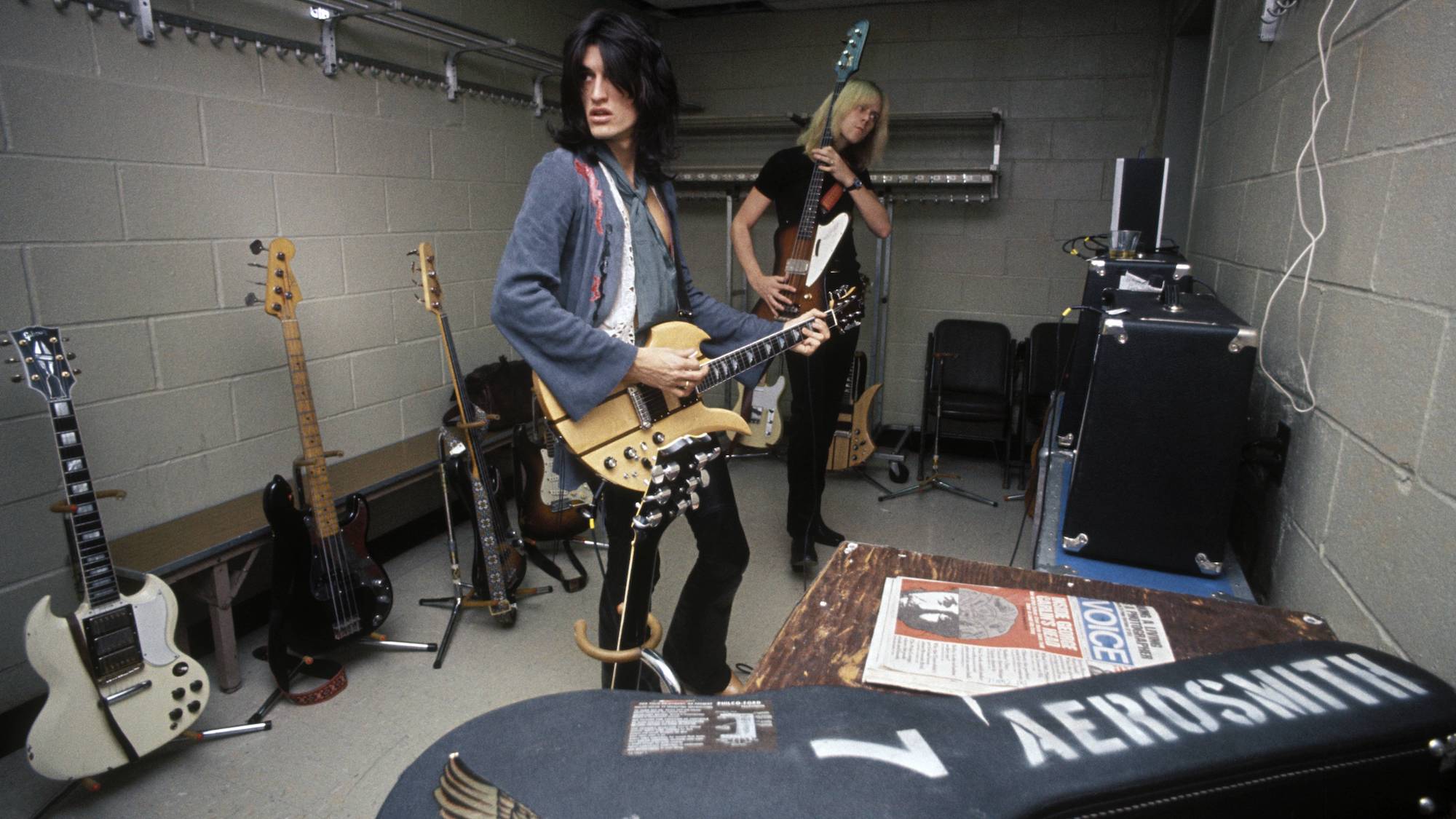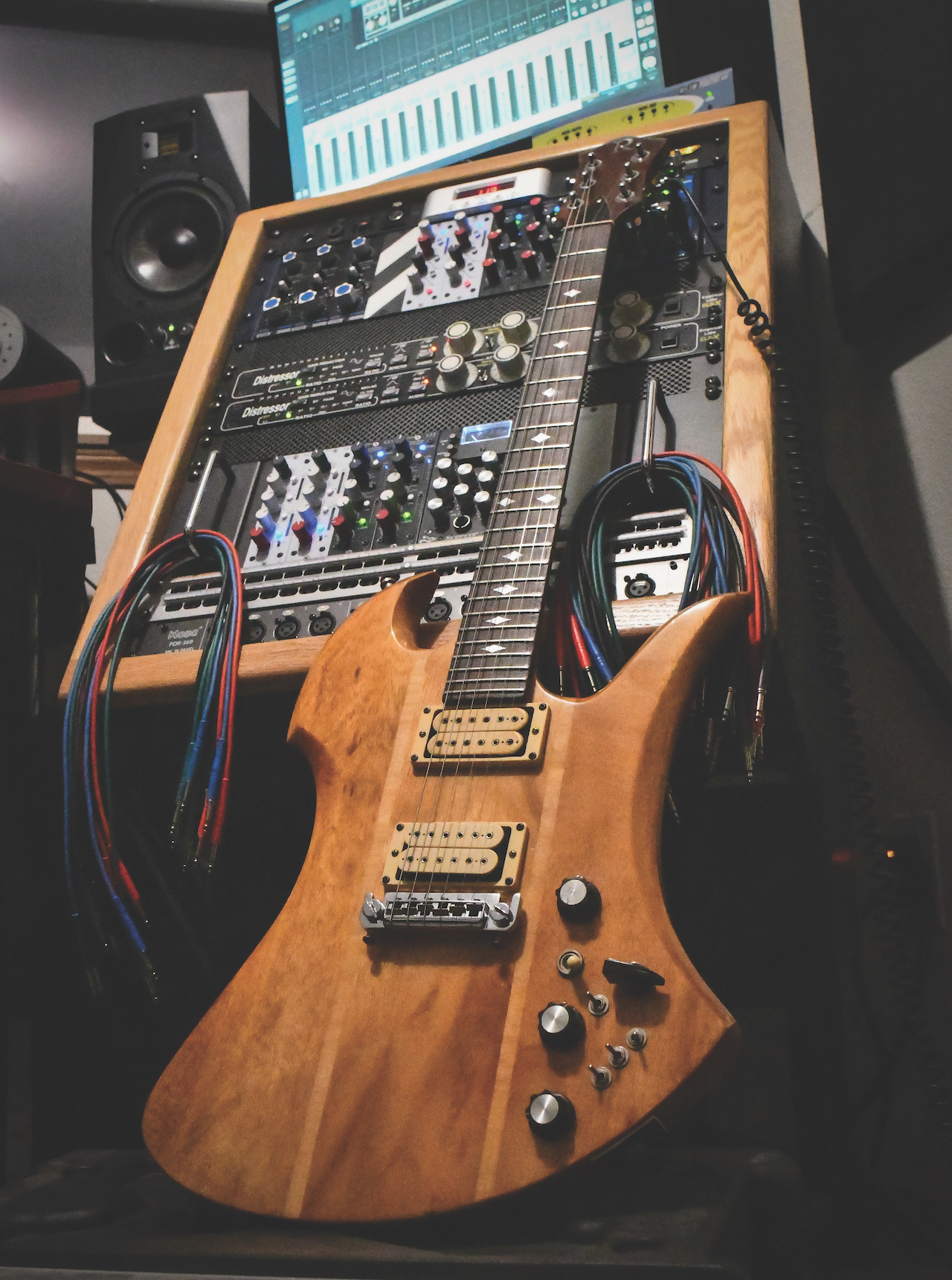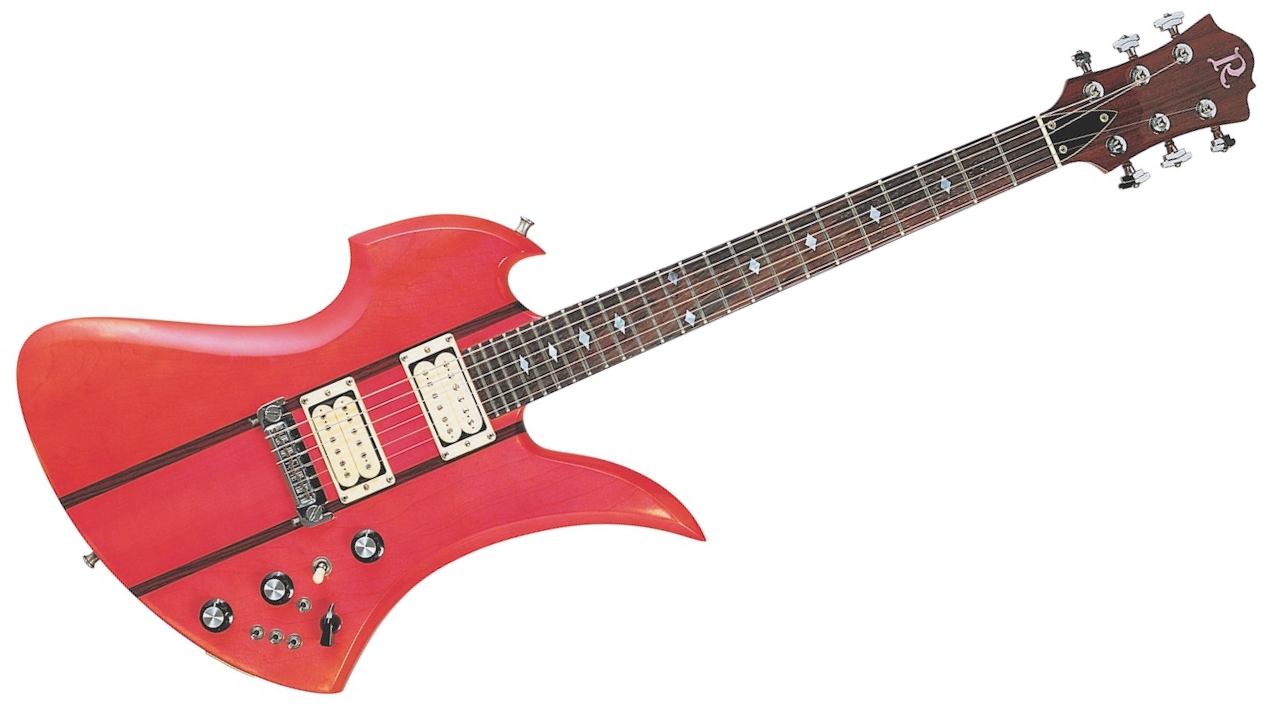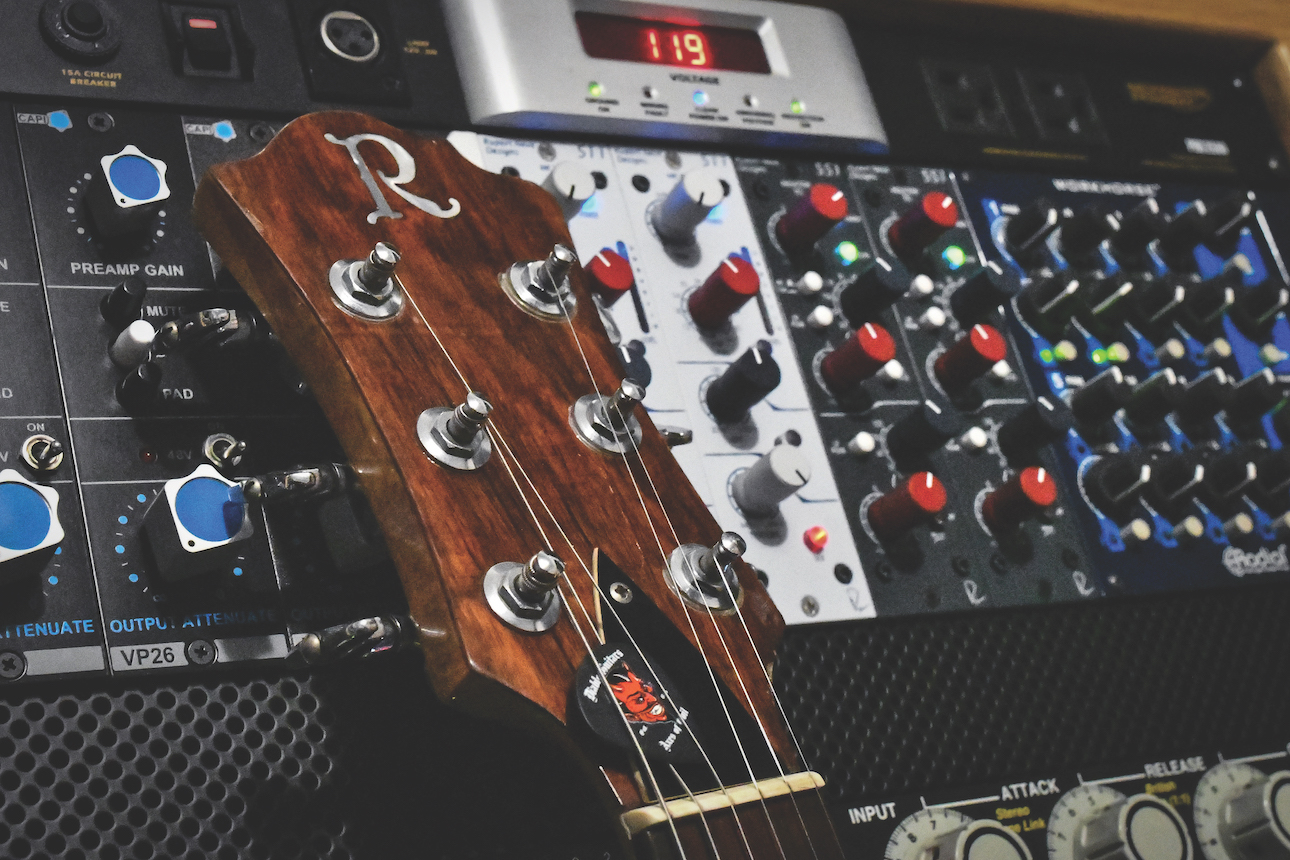“With a through-neck, two DiMarzio Super Distortion pickups, an onboard booster preamp, and a fixed adjustable wrap-around bridge, the B.C. Rich Mockingbird was the ultimate hard-rock weapon”: How a small Los Angeles shop changed the rock guitar game
Used by the Runaways’ Lita Ford, the Alice Cooper tandem of Dick Wagner and Steve Hunter, Slash, and Aerosmith's Joe Perry, the Mockingbird made the models of the '50s and ’60s look like old hat upon its mid-'70s debut

There was a time in the late ’70s and early ’80s when the softer, rounder guitar shapes that were developed in the 1950s and ’60s seemed not only old hat but
utterly uncool. Sharp, pointy, axe-like and aggressively weapon-esque shapes defined the electric guitar’s future, at least for anything rock or metal. And as of about 1976, that meant not Gibson or Fender, but B.C. Rich.
The radically styled and appointed guitars of this California maker looked, felt, and sounded ‘rock.’ And for a good part of the era when hair was big and trousers were tight, B.C. Rich’s guitars appeared on about as many arena stages as those of the big-name guitar makers that had come before. But if you take the story back a couple decades further, the roots of the B.C. Rich operation can be found in a far tamer breed of guitar making.
The B.C. Rich company was founded in the early ’70s by Bernardo “Bernie” Chavez Rico, the son of Bernardo Mason Rico, who had opened his Casa Rico guitar shop on Brooklyn Avenue in Los Angeles in the 1950s.
The elder Rico ran the business operations himself, hiring skilled builders from Mexico to construct the flamenco, classical, and mariachi guitars that were the shop’s stock in trade. But when young Bernie joined the company – thereby inspiring his father to change its name to Bernardo’s Guitar Shop – he took a more hands-on approach to the work, and eventually moved into designing and constructing the solidbody electrics that he’d fallen in love with.
Bernie prototyped his early electric designs in the late ’60s using bolt-on Fender necks, but by the early ’70s his designs had evolved into what might be considered the opposite end of the spectrum. He was among the pioneers of the through-neck design – with heel-less transitions between neck and body – 24 frets, and other upgrades that were appreciated by musicians seeking something beyond the standard big-name offerings.

Bernardo’s name segued to B.C. Rich, an adaptation of Bernie Chavez Rico, by about the time that the company’s first Seagull guitar and bass models debuted in 1974. This was a less dramatic-looking design than what was to come, but it still presented a radical departure from traditional solidbodies.
The features he embraced were further enhanced by phase-reverse and coil-splitting switching options, usually enabled by DiMarzio pickups, which he selected after rewiring Gibson humbuckers for these functions in the early guitars.
Get The Pick Newsletter
All the latest guitar news, interviews, lessons, reviews, deals and more, direct to your inbox!
A couple years later, B.C. Rich introduced its most iconic model, the Mockingbird, a guitar designed by bassist Johnny “Go-Go” Kallas in 1975 and released in ’76. Rico modified the guitar in ’78 to the form seen here. It was the definitive B.C. Rich model, and it became the choice of myriad notable players in the coming years.
In addition to individual volume controls for each pickup, a master tone control and a three-way selector switch, the guitar had four mini-switches that accessed split-coil modes for each pickup, an out-of-phase setting with the two pickups on together, and an active booster preamp. The chicken-head knob tapped a five-position EQ filter, much like Gibson’s Vari-Tone switch.

Although there was an exotic Supreme model above it (the Deluxe came later), the Mockingbird Standard seen on this page was somewhat above the more basic offerings in maple, mahogany, and walnut, which often had simple dot fingerboard inlays.
Other than the narrow strips of maple clearly delineating the through-neck construction at the body’s core, both neck and body wings are made from solid koa, complemented by a Brazilian rosewood fingerboard. For all that exotic timber, though, it weighs just a hair over seven pounds.
Between the solid body, through-neck, dual DiMarzio Super Distortion pickups, onboard booster preamp and fixed Leo Quan “Badass” adjustable wrap-around bridge, the Mockingbird was the ultimate hard-rock weapon Rich had intended it to be. The Mockingbird could drive a high-gain amp into maximum overdrive, and generate bags of sustain in the process.
Retailing at $1,099 in 1978 for the koa model, it represented a significant investment, too. For the first several years of production, the solid tonewoods were entirely hand-crafted in Mexico by a team of skilled luthiers, then sent back to Los Angeles for final assembly, finishing, and setup.
With demand soaring and prices out of reach for so many players, B.C. Rich introduced a more affordable bolt-neck series in 1980. By the middle of the decade, even the neck-through guitars were sourced from manufacturers in Japan or constructed in the U.S. using kits sent from Korea.

By this time, though, original Mexico-to-L.A.-built examples had been in the hands of major stars for several years, and B.C. Rich was considered a leading boutique maker within its target market. Joe Perry played an early Mockingbird, while his Aerosmith partner, Brad Whitford, often sported an Eagle or the unusual 10-string Bich model.
Rick Derringer, the Runaways’ Lita Ford, the Alice Cooper tandem of Dick Wagner and Steve Hunter, and Slayer’s Kerry King were also early adopters. Slash famously played a Mockingbird and a Warlock for many of the early Appetite for Destruction sessions before moving over to custom Les Paul copies.
Through several adaptations and reissues, the Mockingbird has remained one
of B.C. Rich’s most popular models, while the originals of the late ’70s and early ’80s have attained collectible status.
Essential Ingredients
• Neck-through-body construction
• Solid koa neck and body
• Distinctive blade-like body contours
• Dual DiMarzio Super Distortion humbucking pickups
• Multiple switches for boost, coil splitting, phase and EQ
• Leo Quan “Badass” adjustable wraparound bridge
Dave Hunter is a writer and consulting editor for Guitar Player magazine. His prolific output as author includes Fender 75 Years, The Guitar Amp Handbook, The British Amp Invasion, Ultimate Star Guitars, Guitar Effects Pedals, The Guitar Pickup Handbook, The Fender Telecaster and several other titles. Hunter is a former editor of The Guitar Magazine (UK), and a contributor to Vintage Guitar, Premier Guitar, The Connoisseur and other publications. A contributing essayist to the United States Library of Congress National Recording Preservation Board’s Permanent Archive, he lives in Kittery, ME, with his wife and their two children and fronts the bands A Different Engine and The Stereo Field.
Guitar Center's Guitar-A-Thon is back, and it includes a colossal $600 off a Gibson Les Paul, $180 off a Fender Strat, and a slew of new exclusive models
"We tried every guitar for weeks, and nothing would fit. And then, one day, we pulled this out." Mike Campbell on his "Red Dog" Telecaster, the guitar behind Tom Petty & the Heartbreakers' "Refugee" and the focus of two new Fender tribute models











